The Barbecue Summer Camp, co-hosted by Foodways Texas and the Meat Science Section of the Department of Animal Science at Texas A&M University, was held on Friday, July 22th through Sunday, July 24th, 2016. The camp is coordinated by meat science educators, Davey Griffin, Ray Riley, and Jeff Savell, and activities were held at the Rosenthal Meat Center and O.D. Butler Animal Science Teaching, Research, and Extension Complex. This was the seventh Barbecue Summer Camp with the first one held in 2011. An earlier camp was held in June, 2016 to help with handling the high sign-up demand for this event.
Pre-camp dinner at Kreuz Market, Bryan
On Thursday night, before the camp began, participants and instructors gathered at Kreuz Market in Bryan, Texas for some great barbecue and a glance at the newest barbecue establishment in the Bryan/College Station market. Pit master Lee Jasper and Manager Madeline Jasper welcomed the group and showed off the pits after dinner.
Introductions
On Friday morning, Marvin Bendele of Foodways Texas and Jeff Savell, meat science professor at Texas A&M University welcomed about 60 participants to the camp. Before the participants spent some time introducing themselves to the the instructors and to the rest of the camp, Savell introduced the grad and undergraduate students who would be serving vital roles in the camp.
This is how we begin, by saying thanks to the grad students who help make @foodwaysTX #bbqcamp #tamubbq happen. pic.twitter.com/DzynJXSGwa
— Kelly Yandell (@themeaningofpie) July 22, 2016
Pit design and maintenance
The first panel was on pit design and maintenance, and another great group of pitmasters and pit manufacturers were led by Davey Griffin, professor and extension meat specialist at Texas A&M University. The panel consisted of Bryan Bracewell, Southside Market and Barbeque, Russell Roegels, Roegels Barbecue, John Brotherton, Brotherton Barbecue, and Ryan Zboril, Pitt’s and Spitt’s. The panelists talked about the pits they use or have used, proper design for creating good, clean smoke, and how to get the best performance out of them. In addition, the panelists discussed proper break-in, maintenance, and cleaning to get maximize performance.
Texas Barbecue history and culture primer/tour of Martin’s Place
A long-standing tradition at Barbecue Summer Camp is to go to the historic Martin’s Place in Bryan. Pit master and owner, Steve Kapchinskie along with his wife and daughter do a great job of showing off the wonderful brick pits and feed everyone a great lunch of brisket, ribs, and sausage to get the camp started off well.
Robb Walsh, noted food historian and writer, answered questions from the participants about the history of barbecue and included a reading from his book, Barbecue Crossroads, which features a segment about Martin’s Place in it. This tradition is so great because reading this segment in the actual setting of Martin’s brings everything to life.
The field trip to Martin’s in Bryan is always fun. @foodwaysTX #tamubbq #bbqcamp pic.twitter.com/7Un4bogCNO
— Kelly Yandell (@themeaningofpie) July 22, 2016
Meat safety and thermometers
After returning to the Rosenthal Meat Center after lunch, Davey Griffin gave an overview about food safety and proper food handling. One item of special emphasis this camp was to discuss the issue of small particles of wire brushes breaking off and getting ingested. There have been a number of cases of emergency surgery due to the presence of these metal fragments in food, and Davey recommended using great care when cleaning grills and grates so as to not introduce these physical hazards into cooked products.
Davey also showed how best to calibrate thermometers. His recommendation is to be sure to use the best and most accurate thermometers possible so that proper cooking and cooling temperatures can be met.
Barbecue wood and smoke panel
One of the more popular panels at Barbecue Summer Camp is the one on barbecue wood and smoke. Texas is known for having four basic woods for smoking: oak, hickory, pecan, and mesquite. Panelists included John Brotherton, Russell Roegels, Bryan Bracewell, Dr. Nick Nickelson, and Homer Robertson. Each panelist gave their thoughts about their favorite woods to use in smoking meats with most of them using post oak because of its availability in the part of the state they are cooking in.
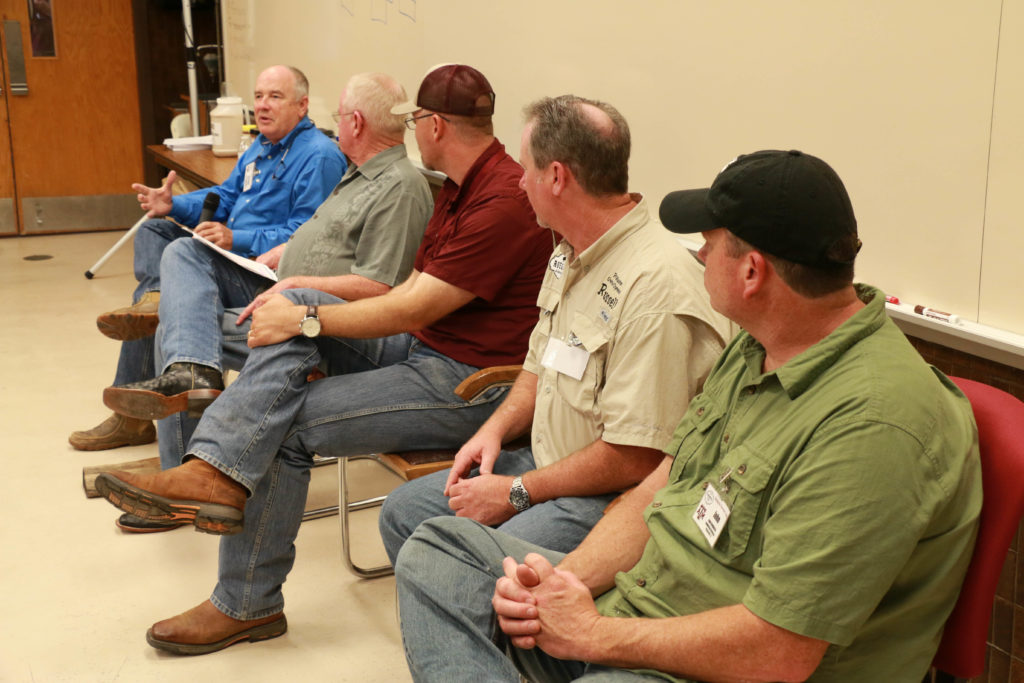
Barbecue Wood and Smoke Panel, Homer Robertson, Dr. Nick Nickelson, Bryan Bracewell, Russell Roegels, and John Brotherton
Dr. Nick gave a great overview of the science behind smoke and the importance of properly seasoned wood. He helped provide some background for a recent post on seasoning wood for barbecue that has been of great use in understanding why smokers should use this rather than green wood.
Homer Robertson is a new edition to the panel, and his background makes him an important contributor to this topic. Homer not only is a world champion chuck wagon competitor who does a lot of cooking using coals from burned-down logs, but he is with the Fort Worth Fire Department and knows quite a bit about fire and smoke. Homer’s suggestion about the role of oxygen in making a clean-burning rather than a smoldering fire supports the concepts often mentioned on this panel about the importance of having properly seasoned wood burning in a pit with a good supply of oxygen to allow for complete combustion to impart the wonderful things we want from smoke on the items that are being cooked.
Rubs and marinades
Ryan Heger from Adams Flavors, Foods & Ingredients once again gave a great overview of the different types of seasonings available along with current trends in food. Ryan discussed the importance of shelf-life of particular products such as black pepper, and he spent a great deal of time talking about how to add heat to flavors without exceeding what people might enjoy eating.
Ryan provided a variety of seasonings for the participants to experiment with, and the students assisted them in seasoning briskets, pork Boston butts, pork baby back ribs, and beef chuck short ribs that would be cooked either overnight (briskets and pork butts) or the next day (pork baby back ribs and beef chuck short ribs).
Brining basics
Gerardo Casco, Department of Poultry Science, discussed the chemistry of meat and how brining works. The major feature of this presentation was that brining without some form of injection or vacuum tumbling is not an effective way of increasing the introduction of brine.
Hog preparation for whole hog barbecue
Ray Riley and Drew Cassens prepared a brine for injection into a whole pig carcass that weighed about 70 pounds. Ray and Drew made up a two-gallon brine that contained 1 cup of Kosher salt and 1 cup of sugar. The target pump was about 20% of the weight of the carcass.
Dinner and refreshments
Bryan Bracewell and the crew from Southside Market and Barbeque provided an outstanding meal of brisket, baby back ribs, and their famous hot guts beef and jalapeño and cheese sausage for the evening. The event was The meal was topped off with the choice of blackberry cobbler or peach cobbler along with Blue Bell Homemade Vanilla Ice Cream.
Special thanks go to the Spoetzl Brewery, Shiner, Texas for providing Shiner Bock beer for the Friday and Saturday evening meals.
Hog on the pit
The participants traveled to the Jeff Savell home to watch the whole pig being placed inside the cinder-block pit for all-day cooking. Thanks to Taylor Rowland, Max Martinez, and Patrick Frenzel for spending the day cooking the pig.
Pig is on for #bbqcamp. @foodwaysTX @jsavell @tamudgriff pic.twitter.com/IJHd7Q30CV
— Ray R. Riley (@AgRiley79) July 23, 2016
Taylor, Patrick, and Max doing great job with #bbqcamp pig roast #tamubbq pic.twitter.com/Lez2ih1Blv
— Jeff Savell (@jsavell) July 23, 2016
Brisket and pork Boston butt cooking
On Saturday morning, the briskets and pork butts were ready to be placed in peach paper for additional cooking to finish off. John Brotherton and Davey Griffin discussed the overnight cooking of the briskets and butts before the products were wrapped.
Camp briskets and a hump are doing good thanks to @BBQBrotherton! @jsavell @AgRiley79 @foodwaysTX #bbqcamp #tamubbq pic.twitter.com/wJEFNn2obg
— Davey Griffin (@tamudgriff) July 23, 2016
Beef anatomy overview
Davey Griffin and Ray Riley spent the morning going over the various cuts that come from beef along with a USDA beef grading overview. Ray ribbed a carcass in front of the participants, which always creates quite a photographic frenzy for those wanting to capture the moment on their cameras or phones.
Beef cutting room demonstrations
Various cuts of beef were displayed in the teaching cutting room of the Rosenthal Meat Center with graduate students standing by to discuss the different cuts and their uses in barbecue or other methods of preparation.
Lunch: heavy tasting – meat market style
A typical market-style lunch of smoked meats, cheese, onions, pickles and bread were served to the participants. Individual cooked briskets and pork butts seasoned by the participants the day before were sliced or pulled with the teams of people who seasoned them having the first chance at sampling the cuts. Each team talked about the type of seasonings they used and how they thought the products turned out.
@jsavell is about to cut briskets for #bbqcamp #tamubbq pic.twitter.com/WpfKGHgPlu
— Davey Griffin (@tamudgriff) July 23, 2016
Pork anatomy overview
Davey Griffin presented an overview of pork carcass anatomy and terminology.
Pork cutting room demonstrations
Various cuts of pork were displayed in the teaching cutting room of the Rosenthal Meat Center. Graduate students talked about the cuts, and McKensie Harris and Courtney Boykin conducted cutting demonstrations for the participants.
Whole-hog barbecue dinner
Saturday evening ended with a whole-pig cooking event where the beef and pork ribs that had been seasoned by the participants and prepared by John Brotherton were enjoyed. Although it was a hot July night, a good time was had by all.
Poultry sessions
Sunday morning was devoted to poultry, and the activities were led by Christine Alvarado, Department of Poultry Science and Brandon Burrows, Kerry Ingredients with preparation and cooking/smoking demonstrations conducted by the Poultry Science staff and students. Fajitas, homemade sausage, drumsticks with mayo/spices, and wings with sriracha sauce were prepared by the participants. Brandon shared the recipe for Peruvian Rotisserie Seasoning and showed the participants how to make.
Brandon also presented an overview of current trends in flavor and answered questions from the participants regarding various seasonings and their usefulness for barbecue and other applications.
Summary
The seventh Barbecue Summer Camp came to an end with everyone leaving full of knowledge and barbecue! Thanks for all of the participants, speakers, pit masters, and students who were involved in another outstanding camp! Special thanks go to Jordan Hevner, Madalynn Kainer, and Carly Hoffman for providing such great logistic support for the camp, and to Jennifer Willis and Taylor Rowland, two students from the ANSC 117 Texas Barbecue class who volunteered their time to help out.

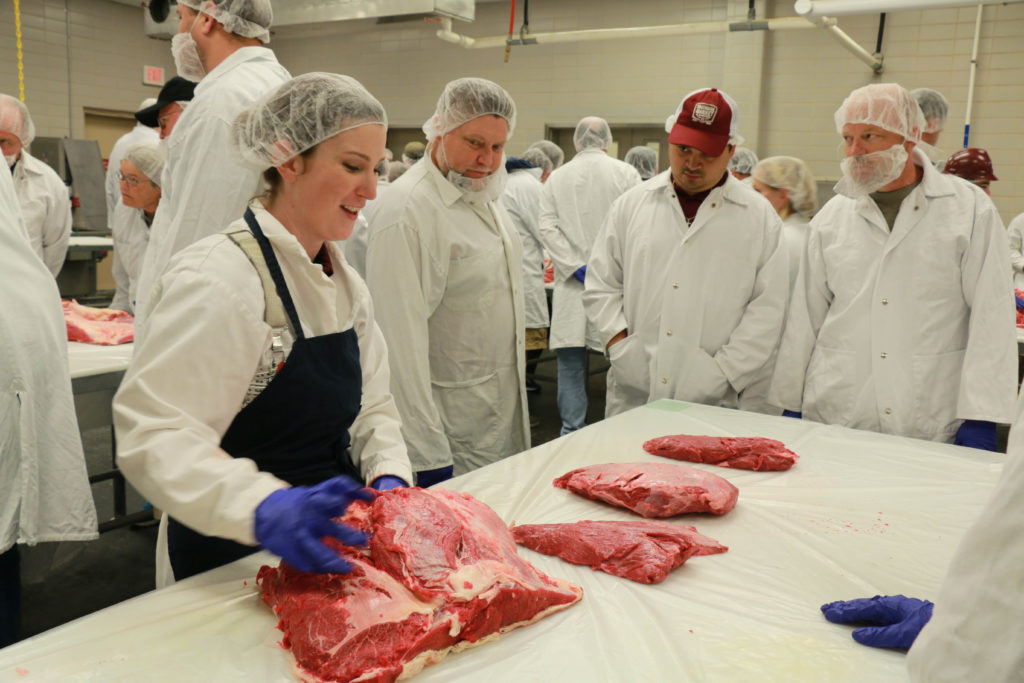
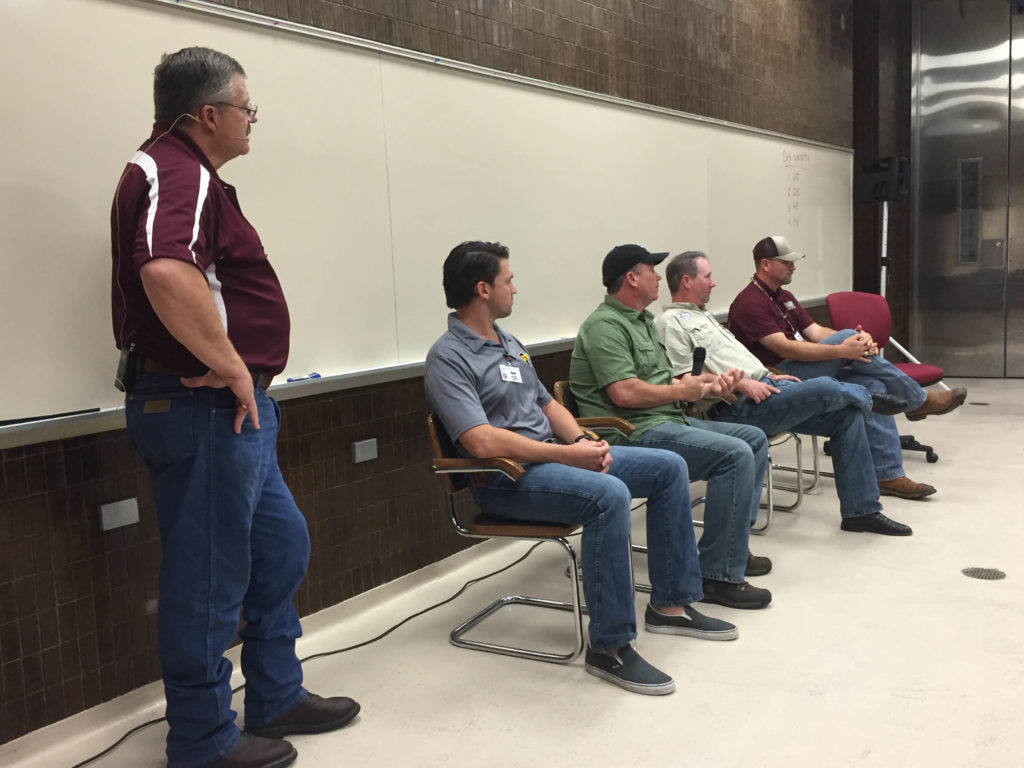
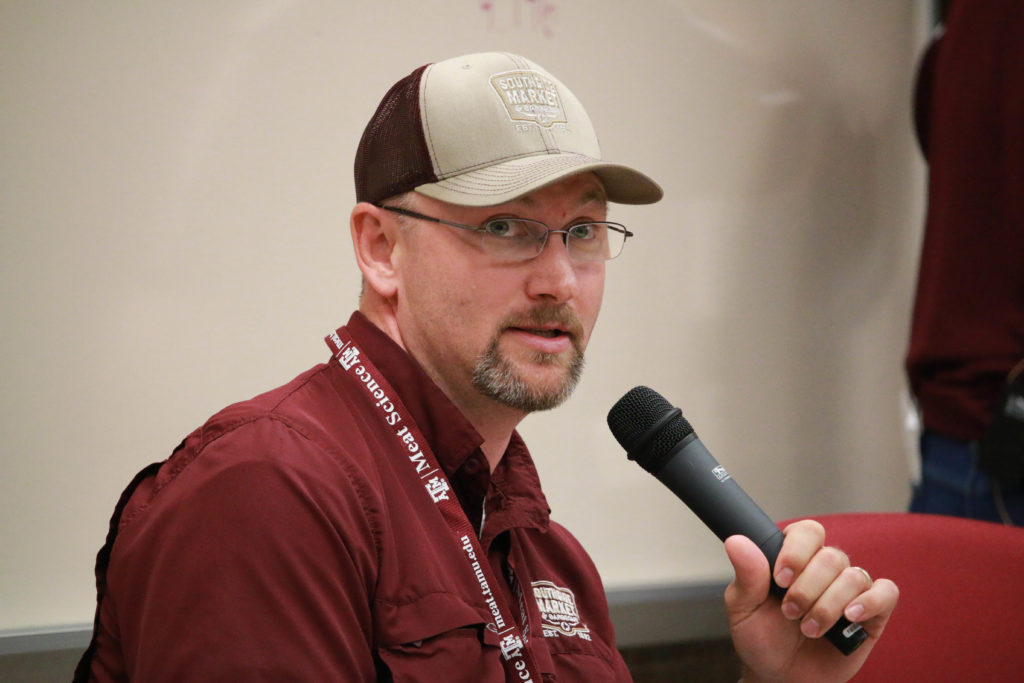
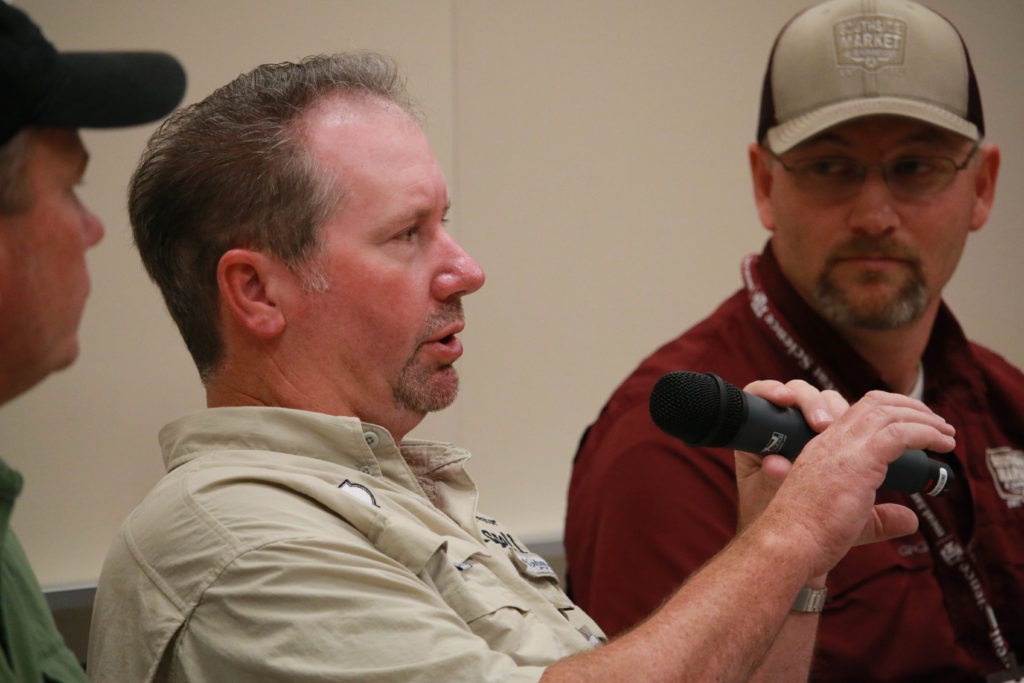
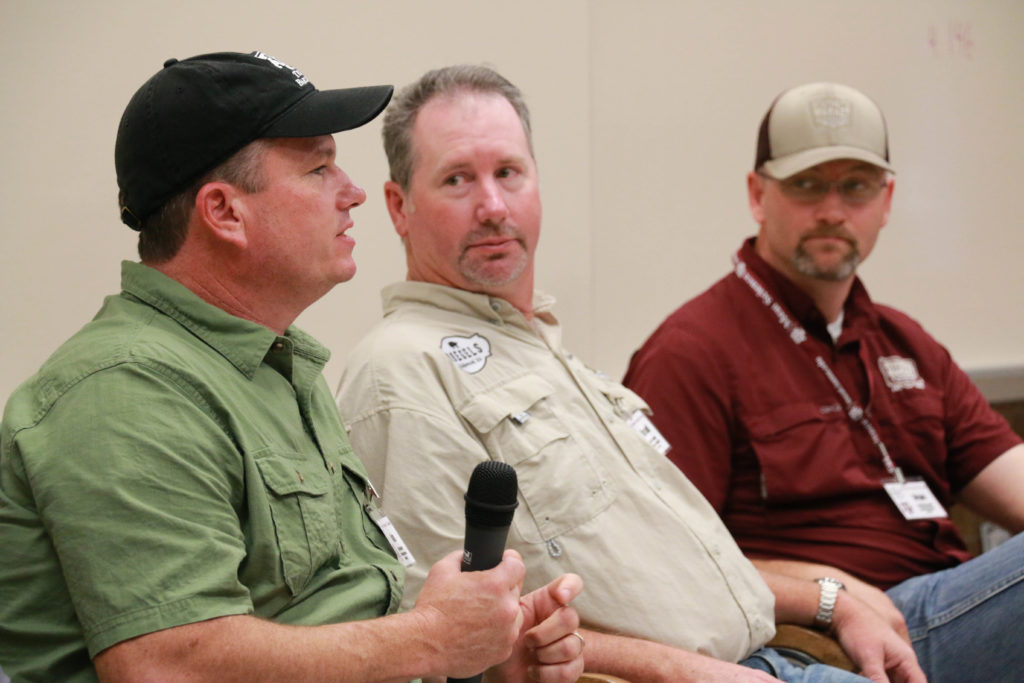
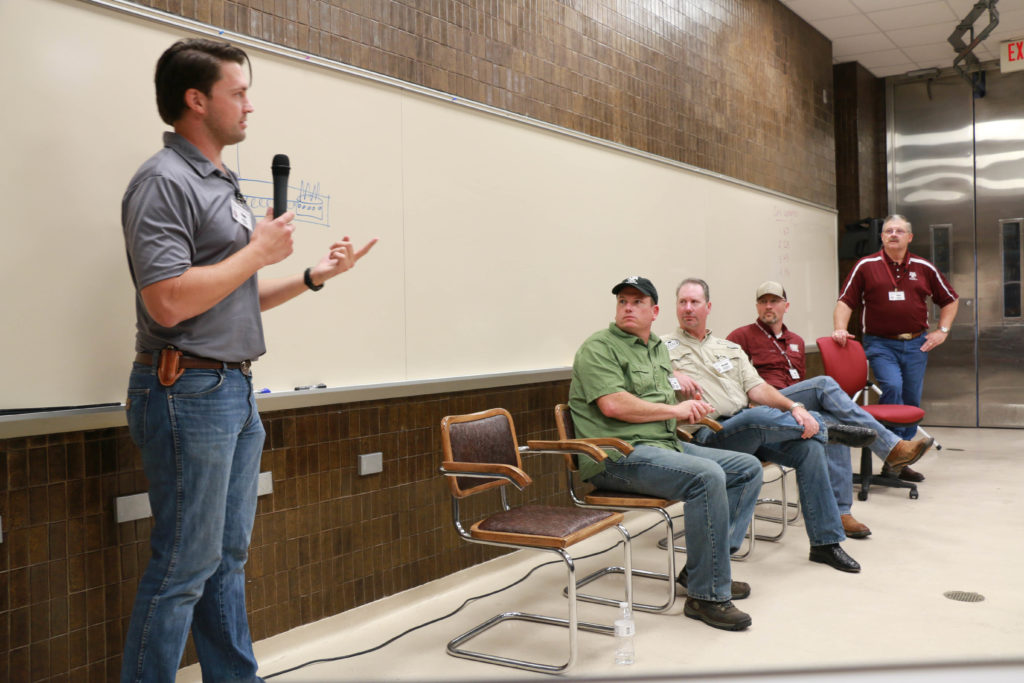
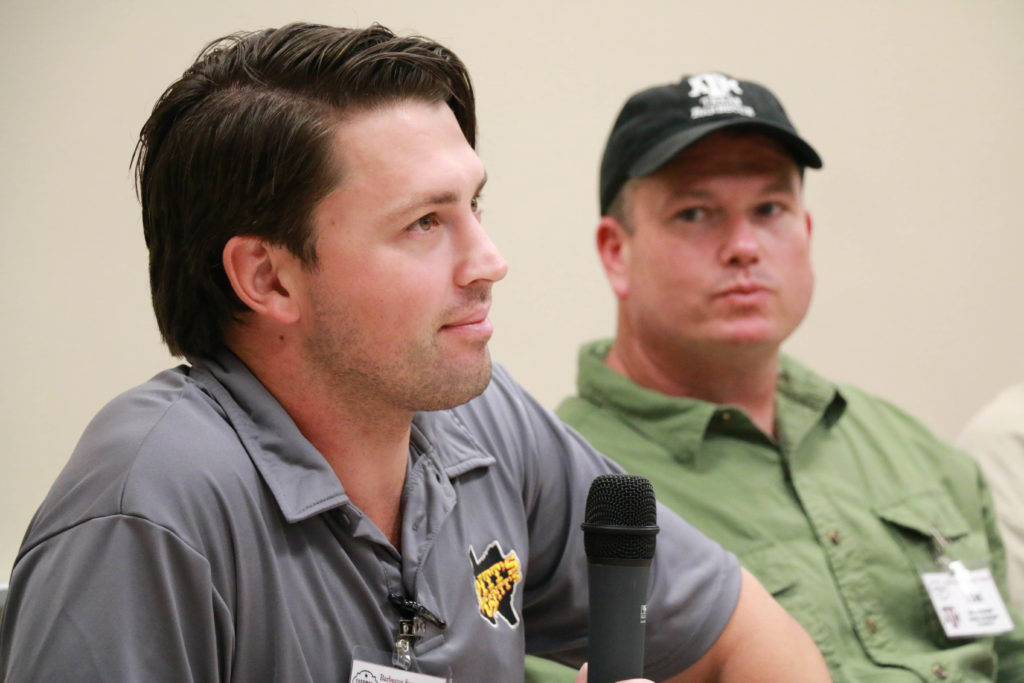
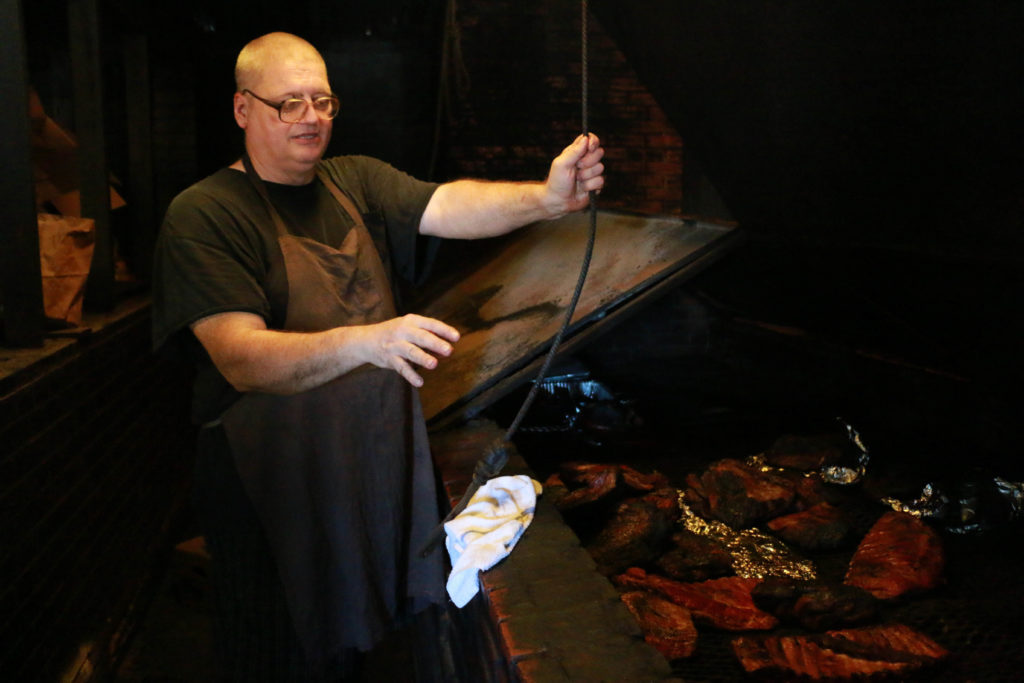
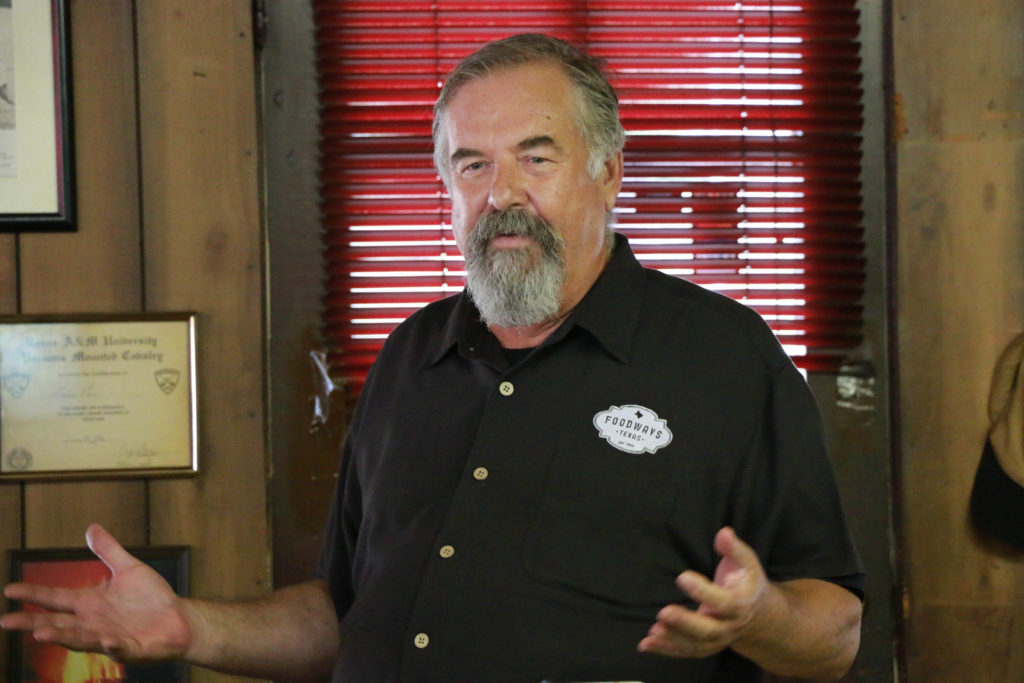
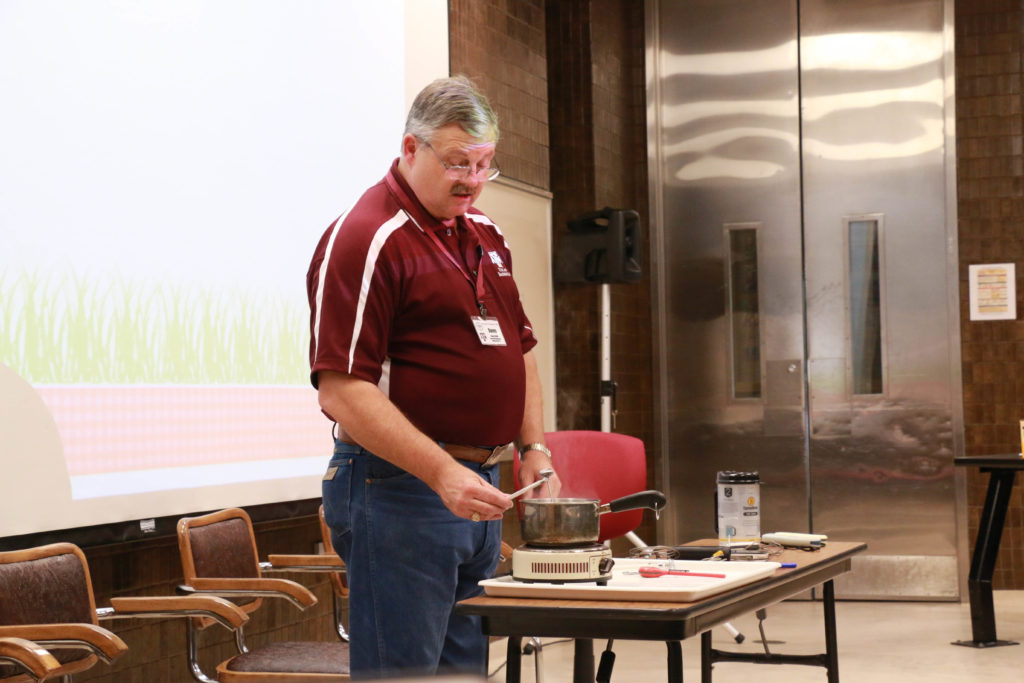
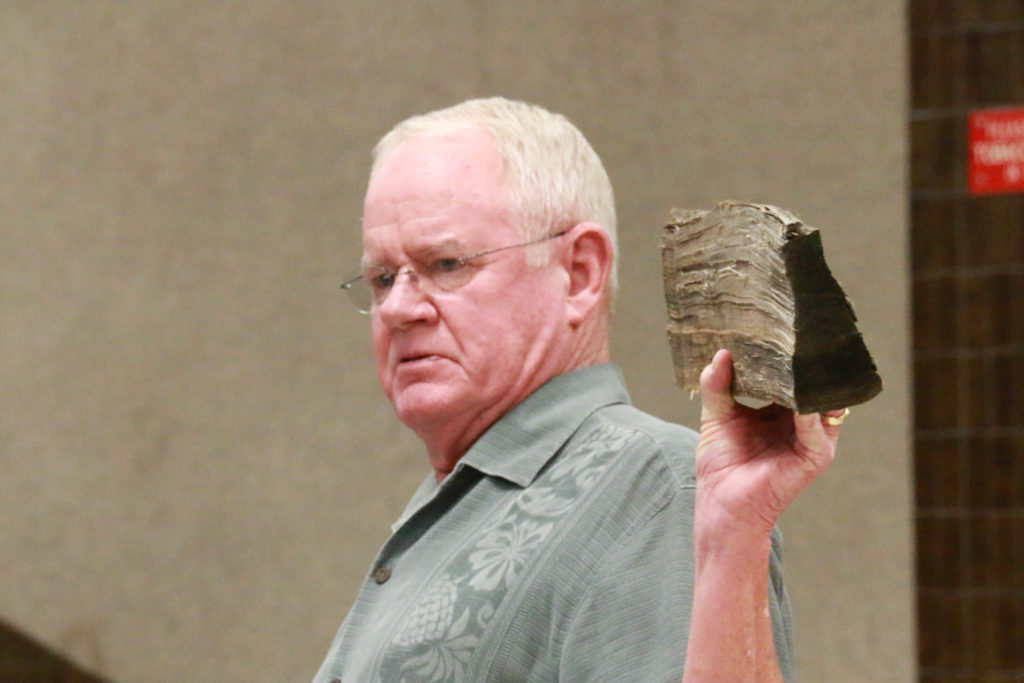
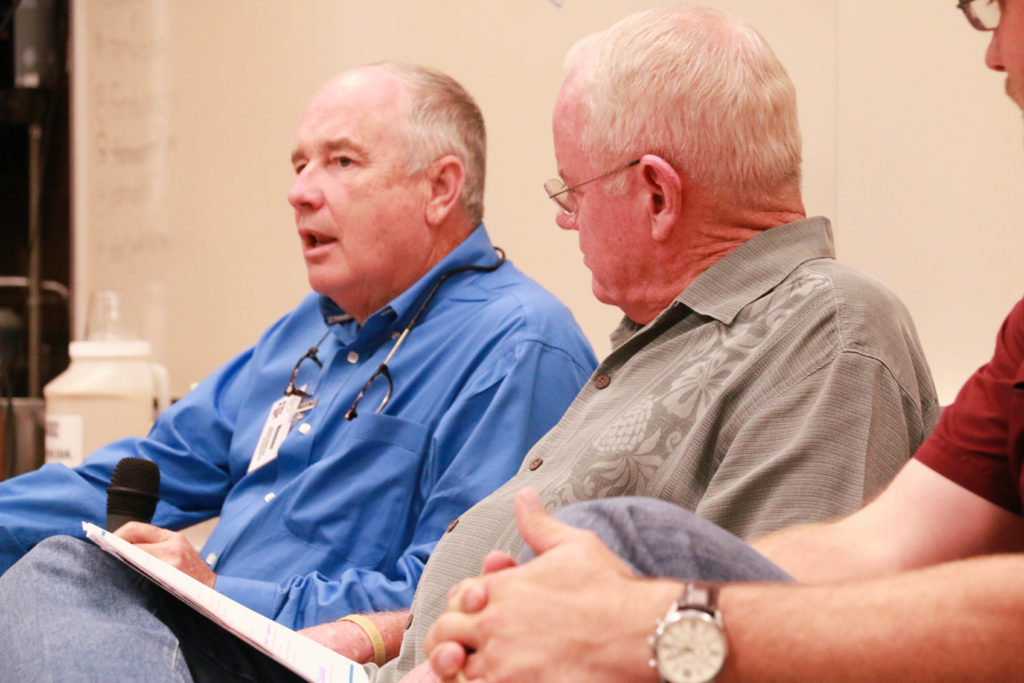
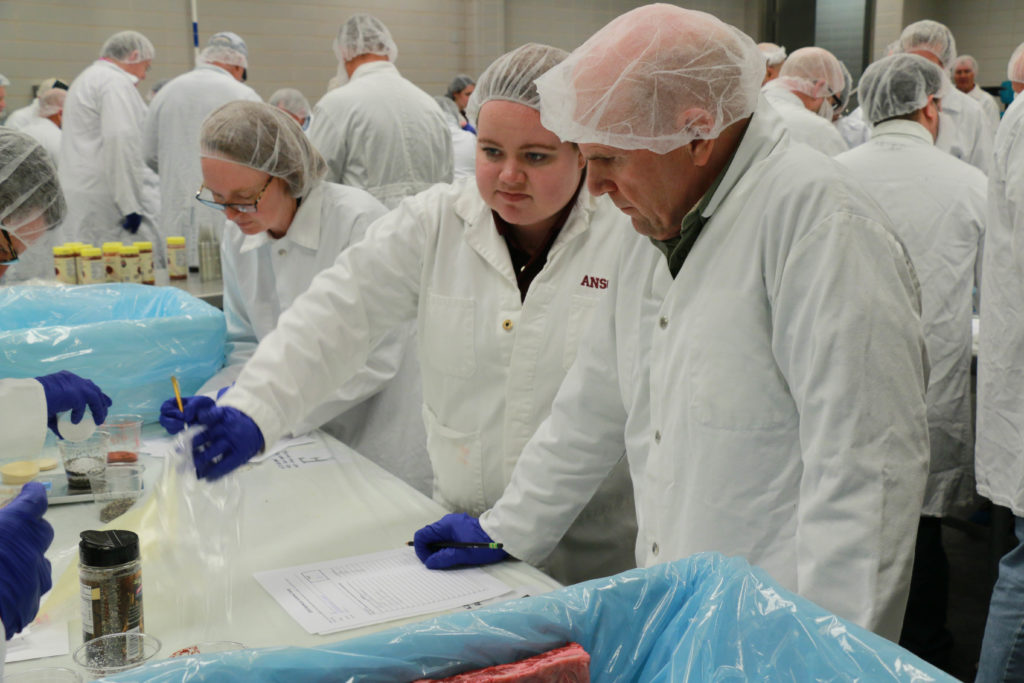
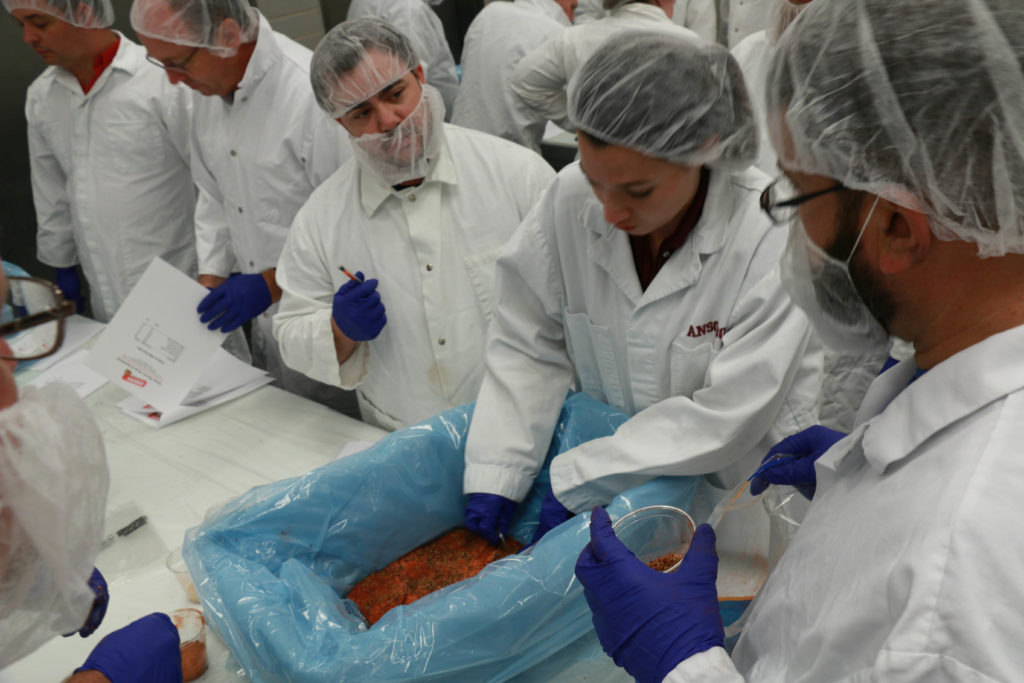
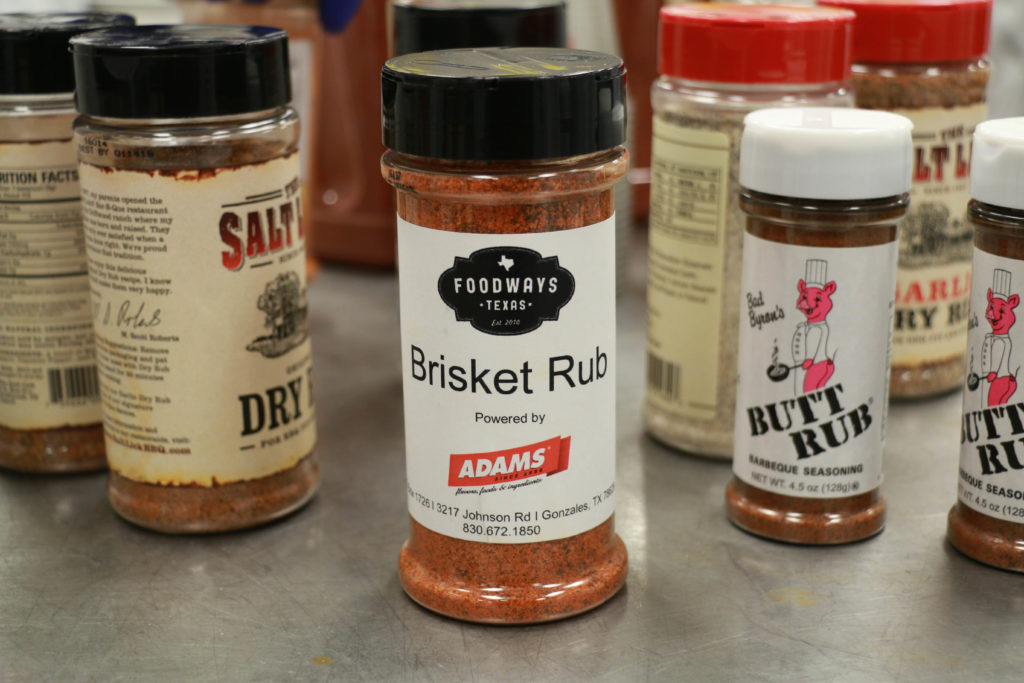
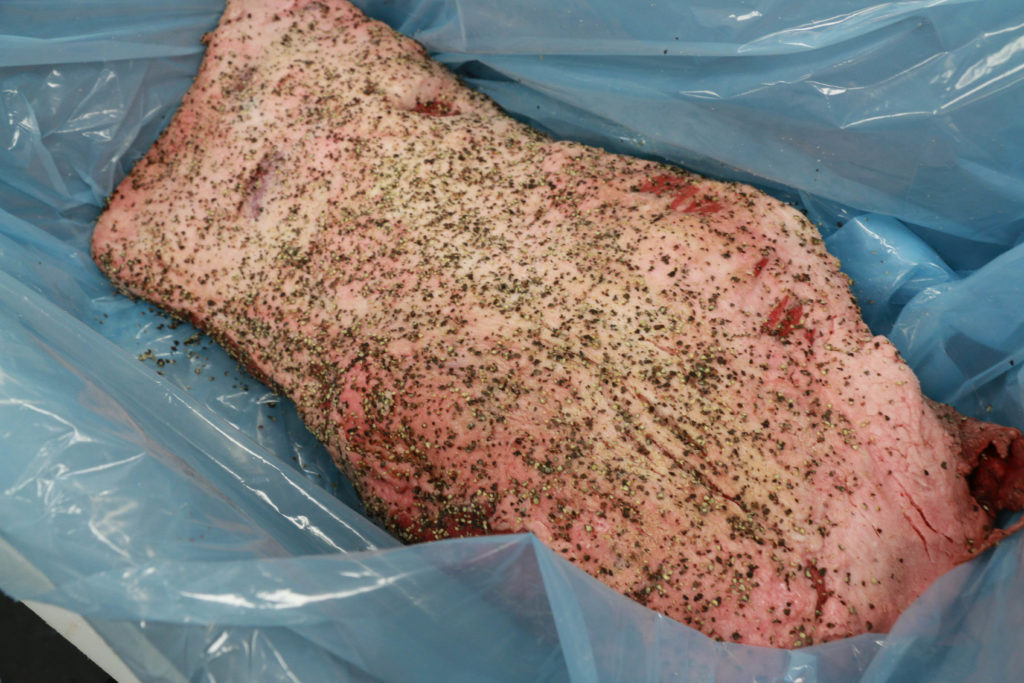
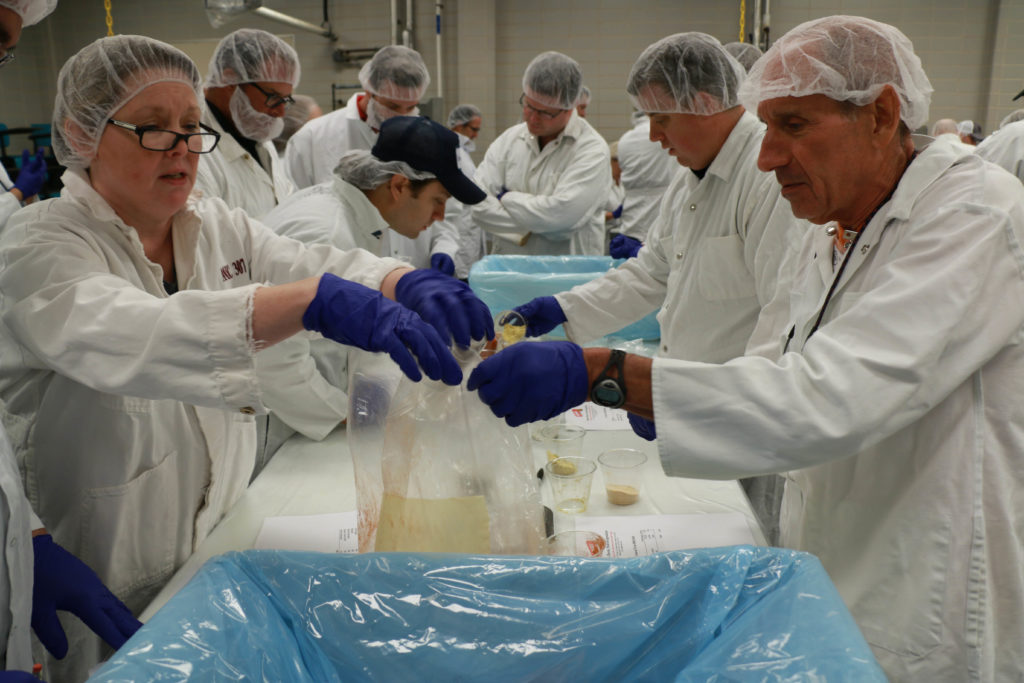
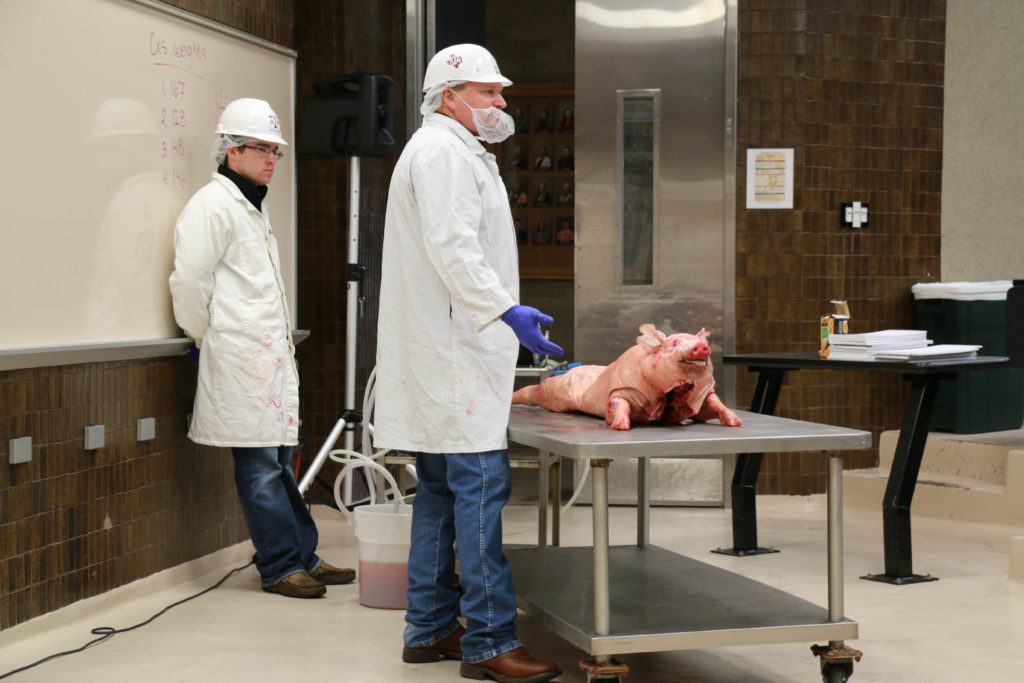
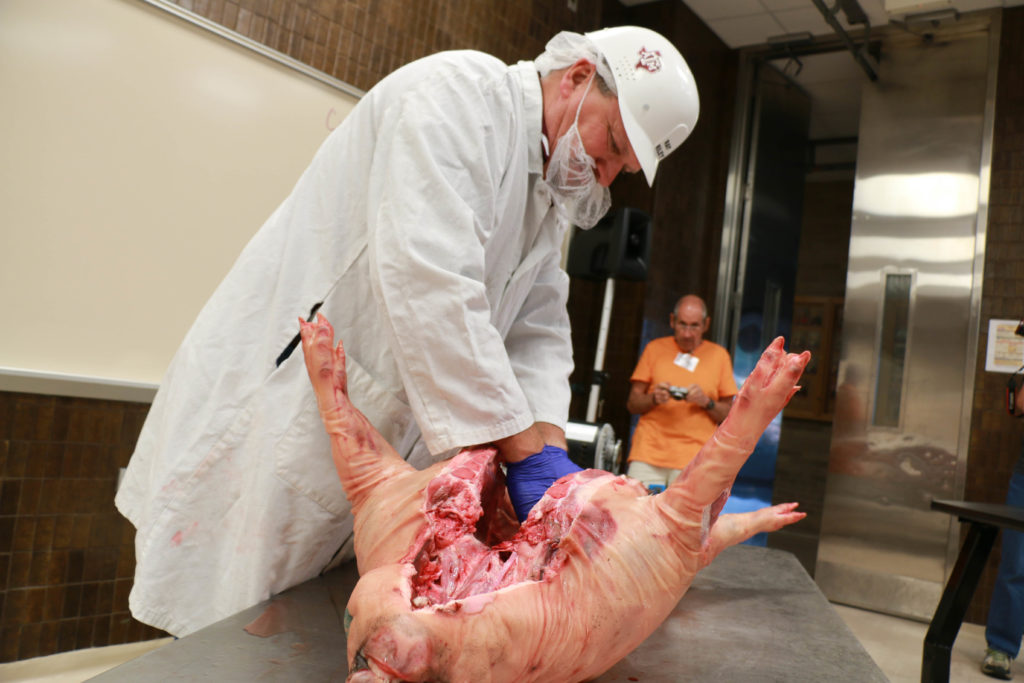
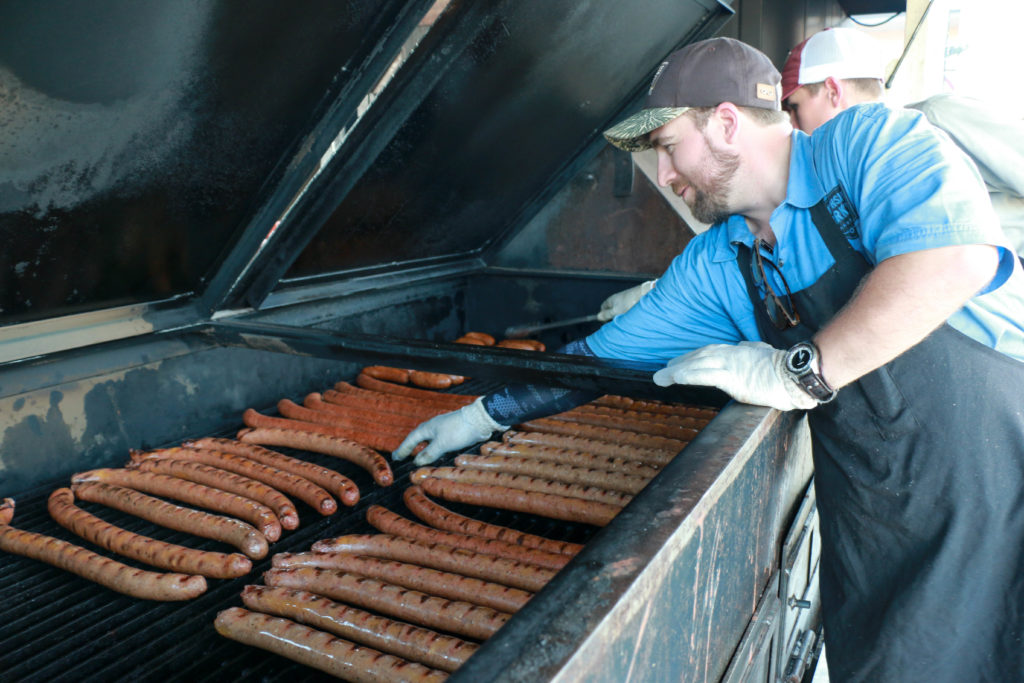
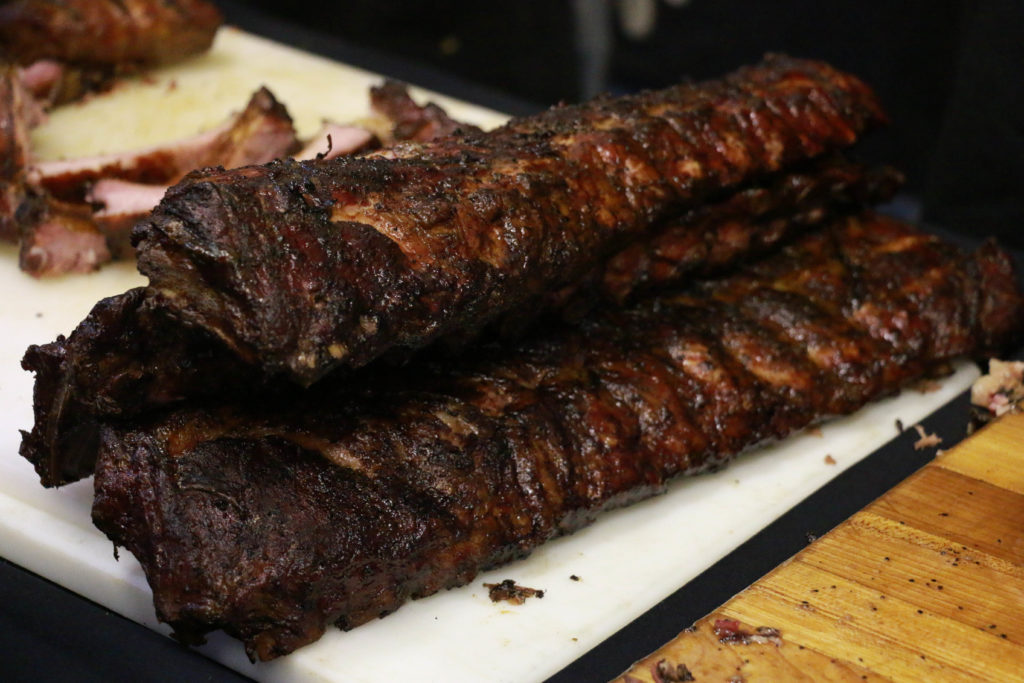
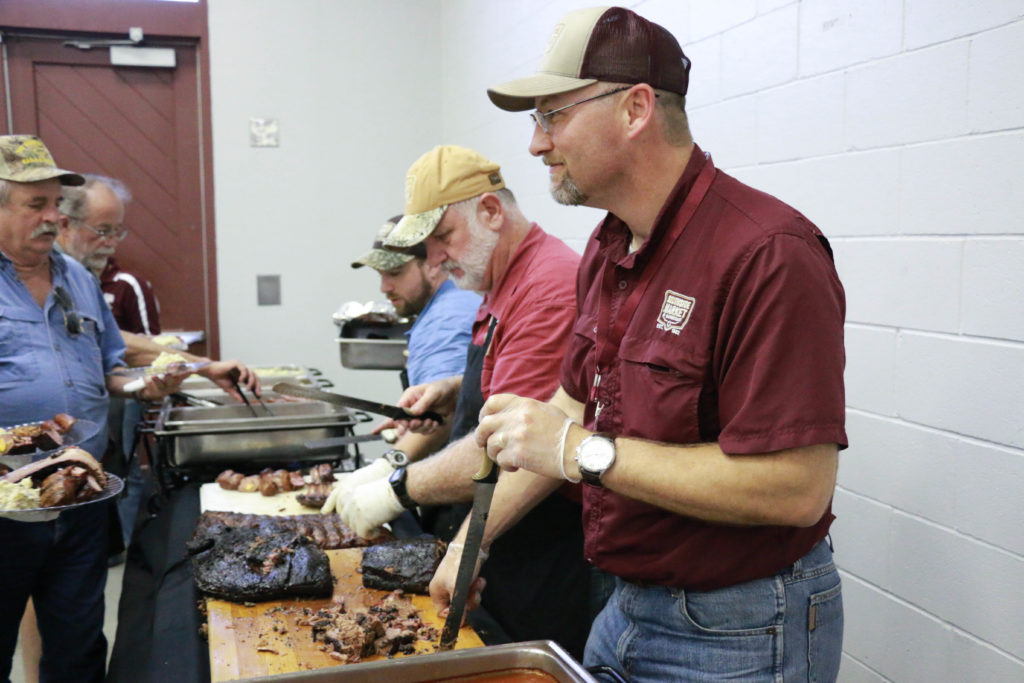
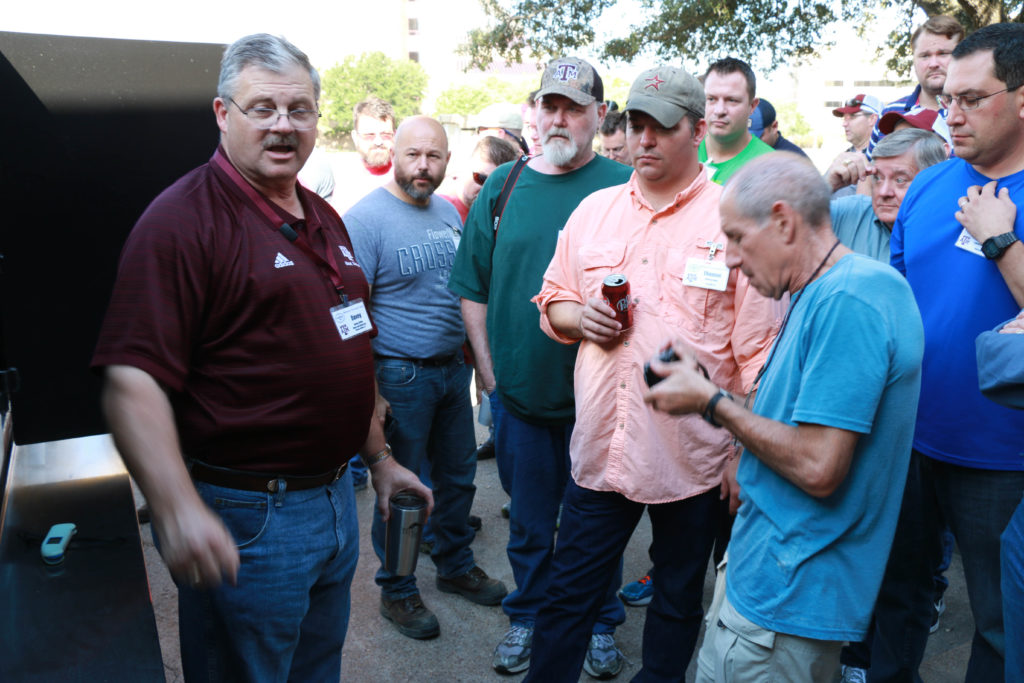
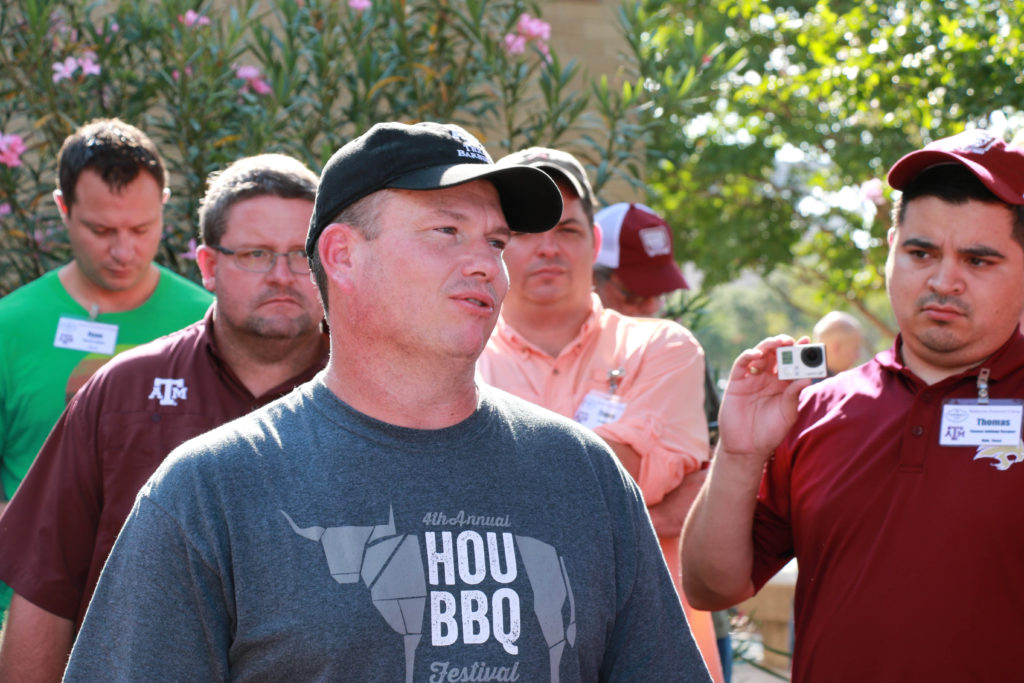
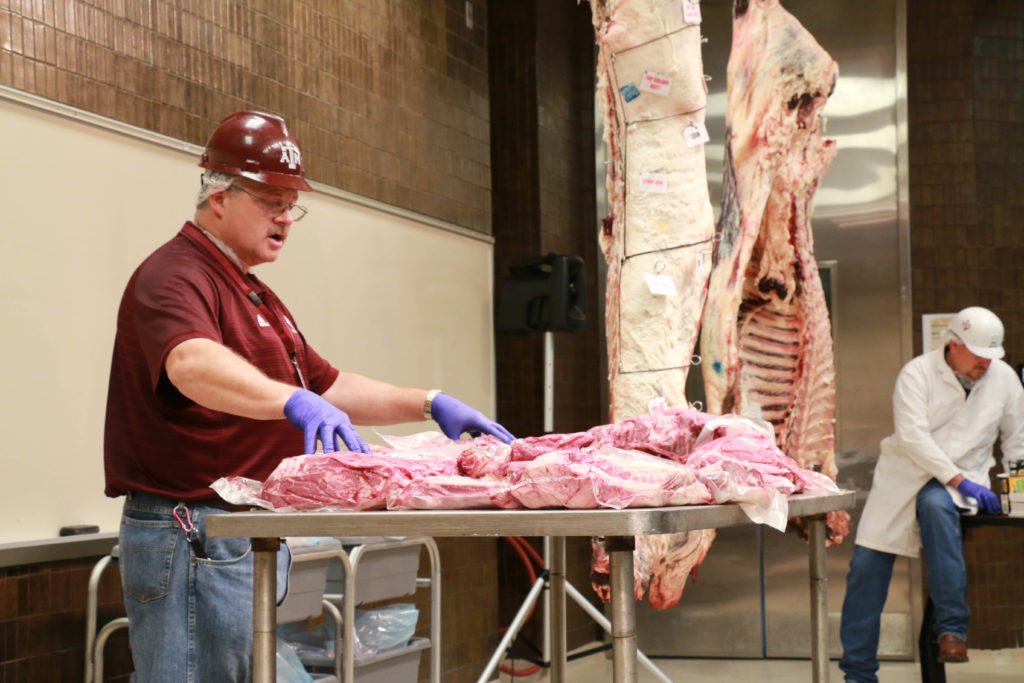
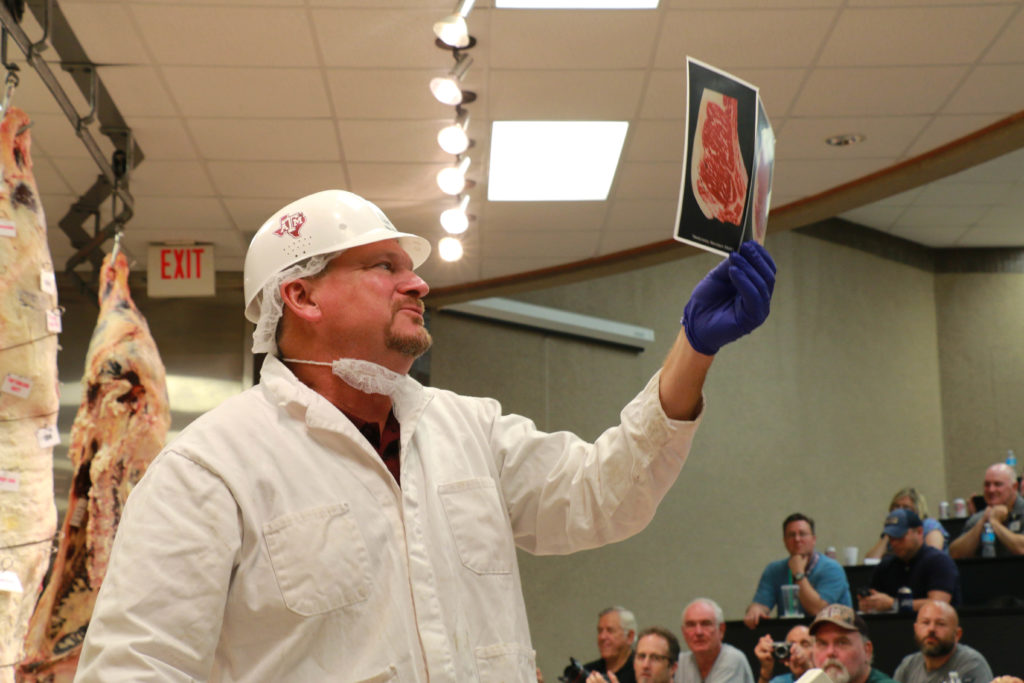
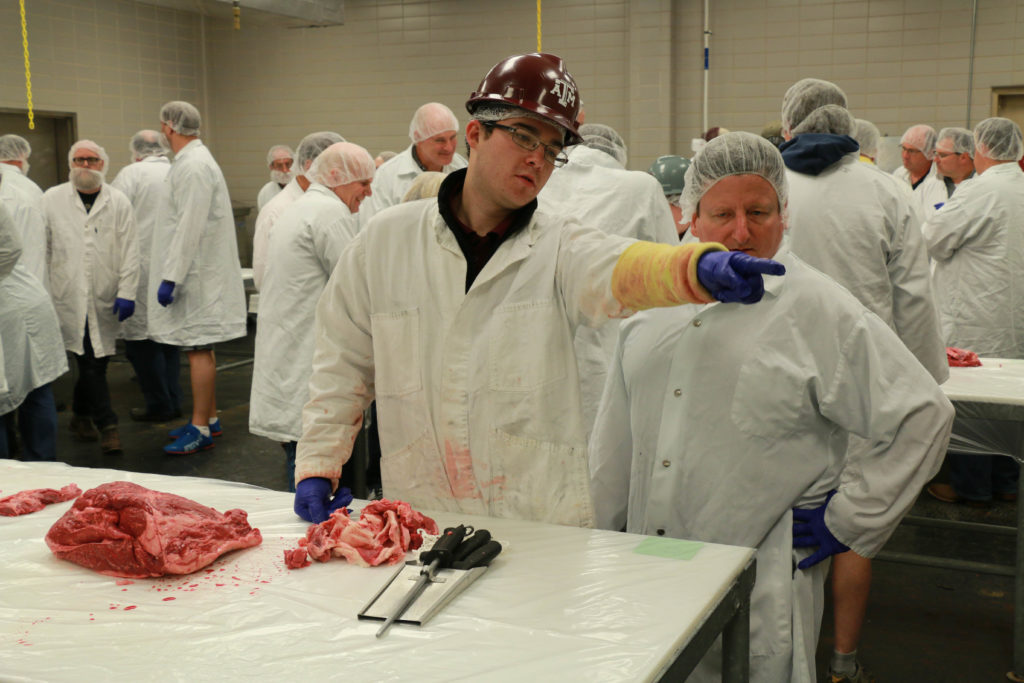
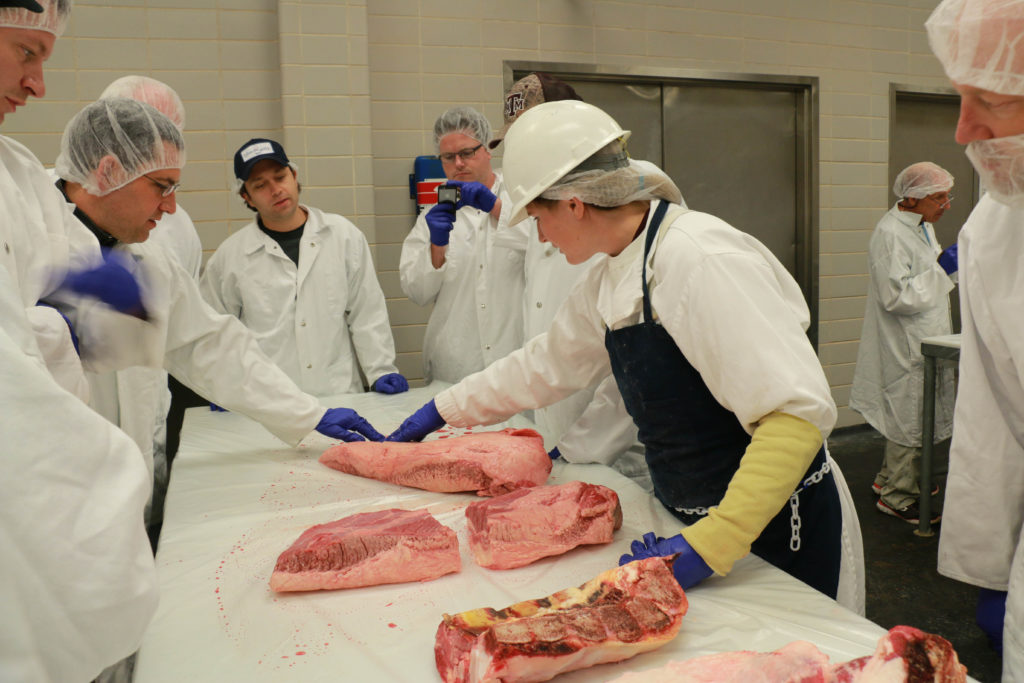
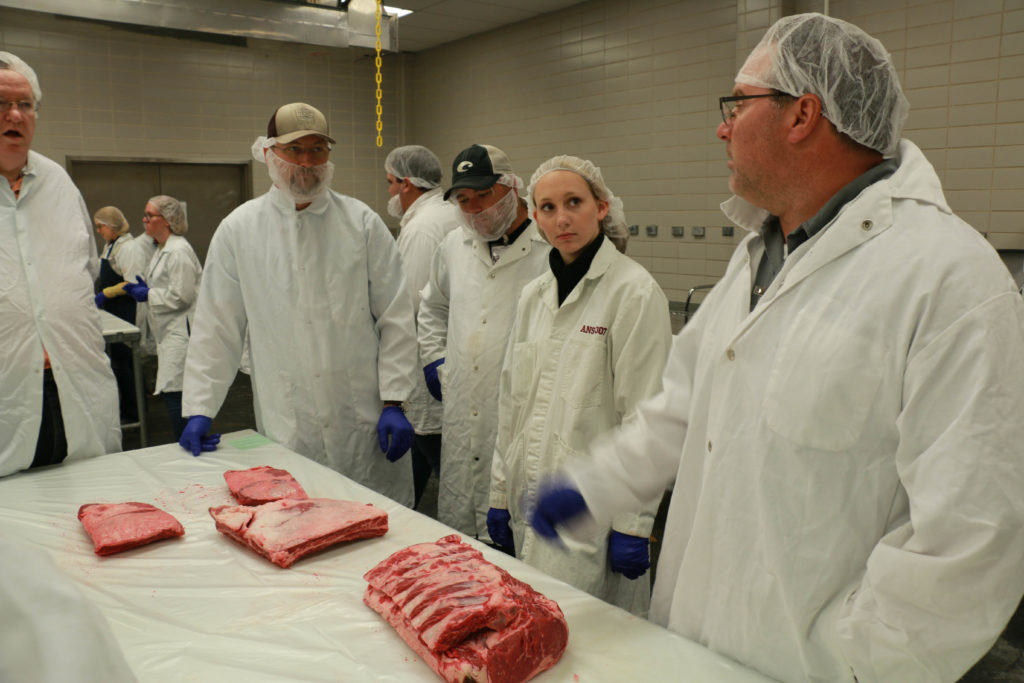
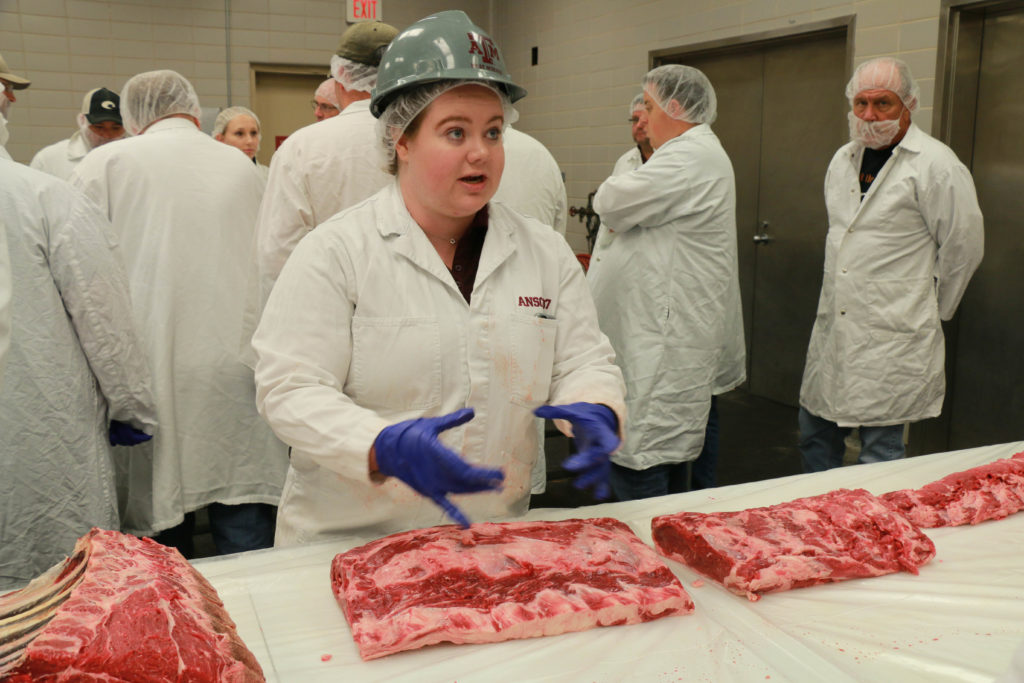
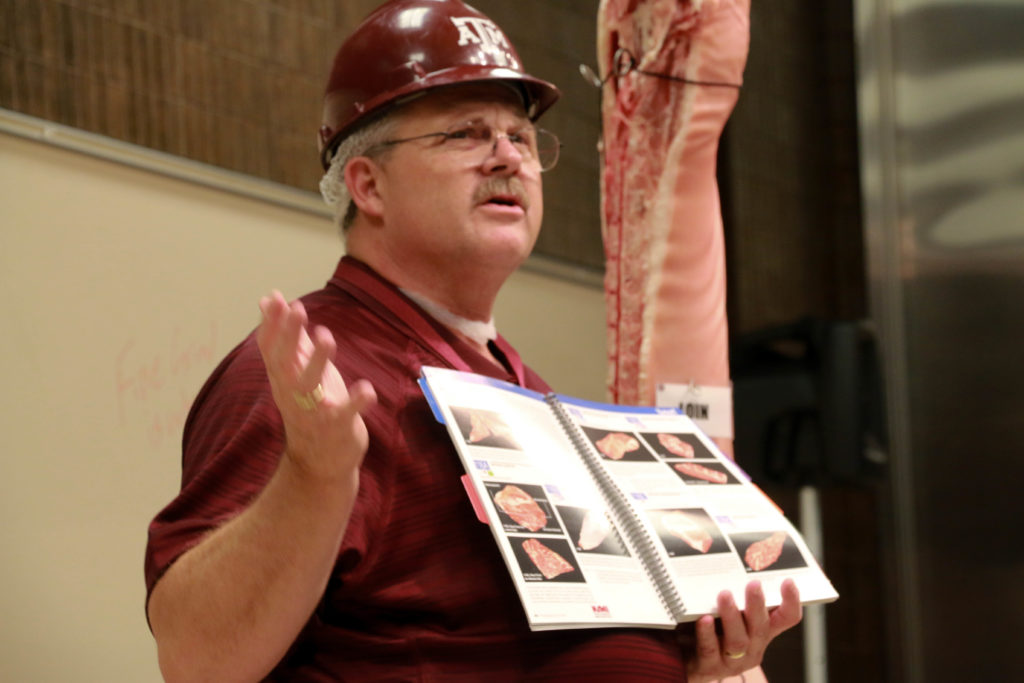
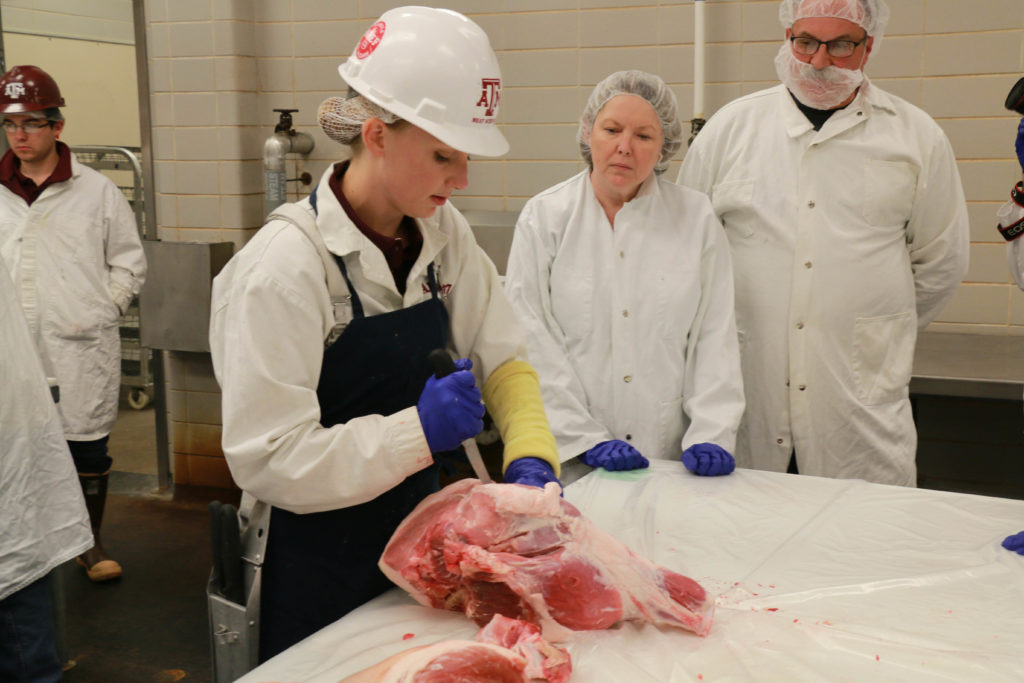
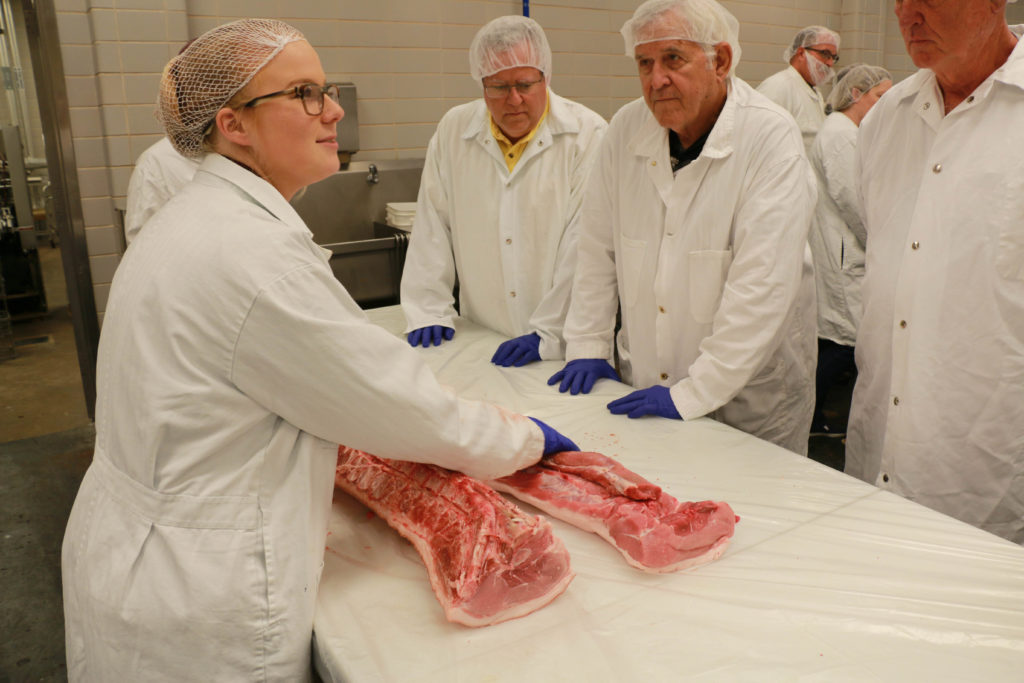
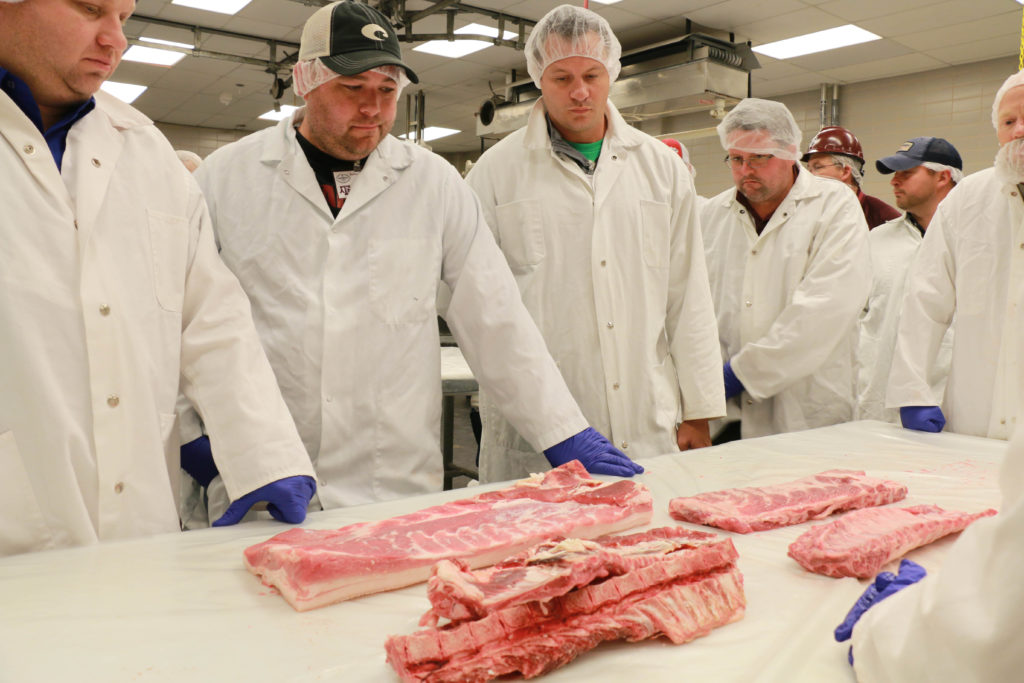
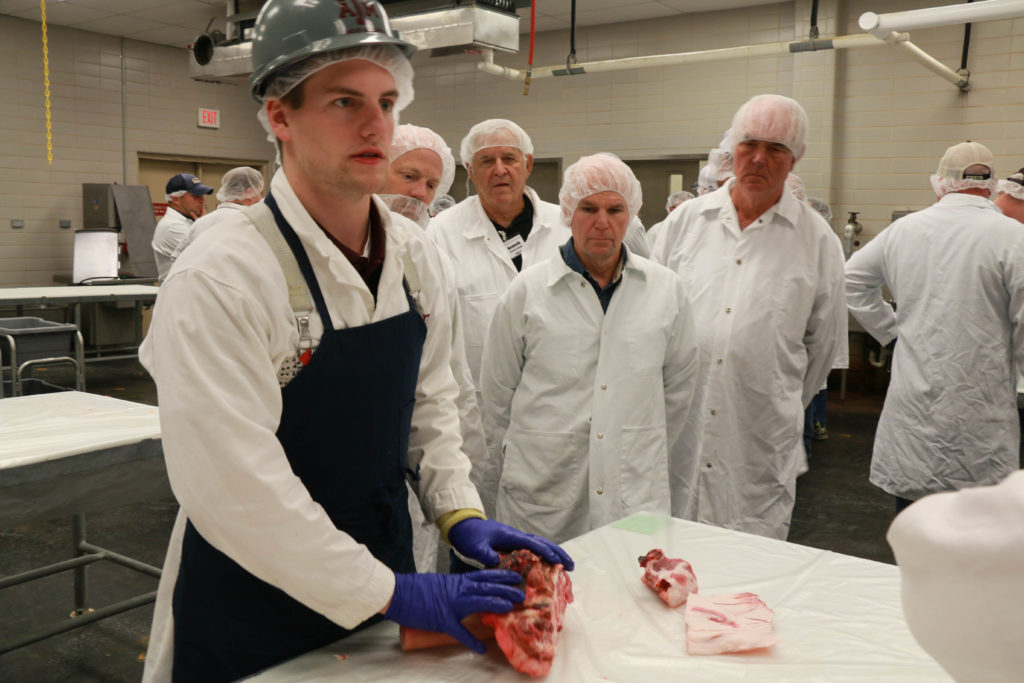
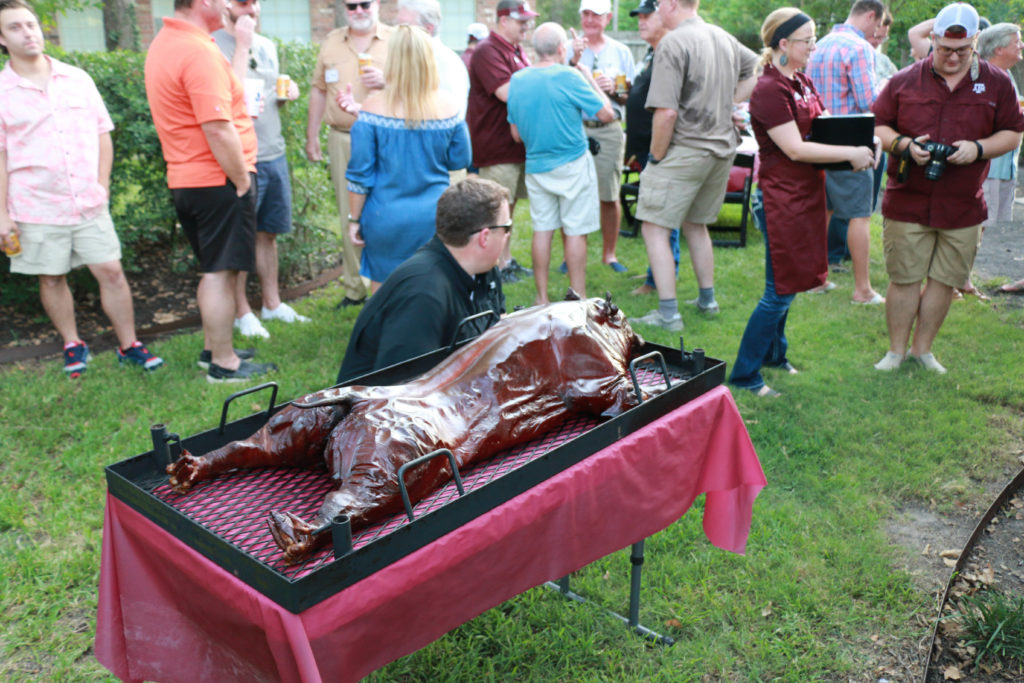
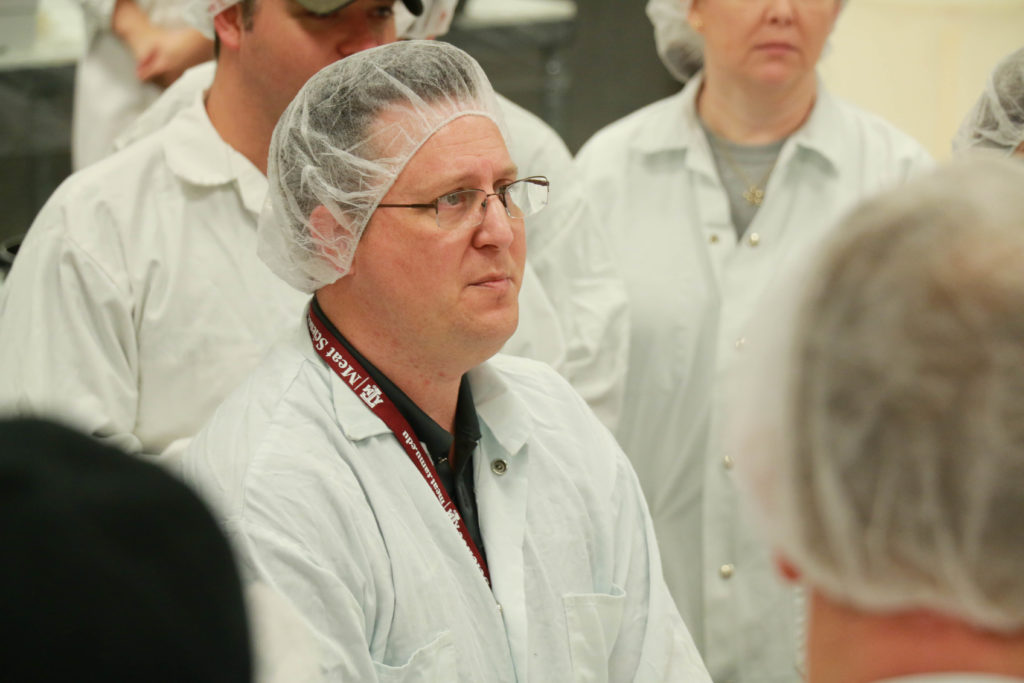
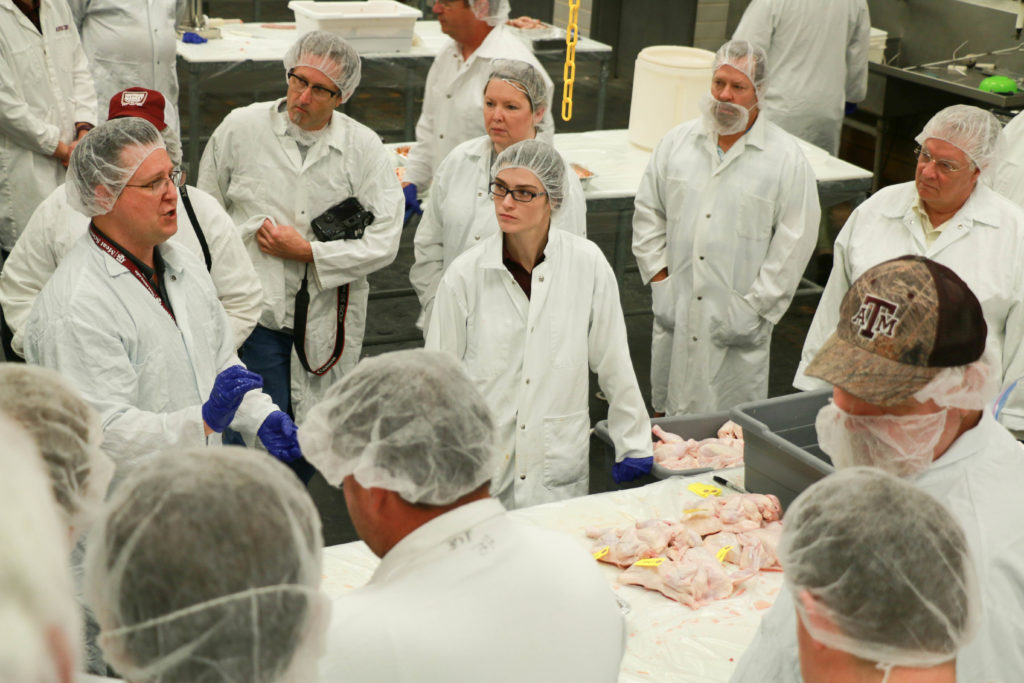
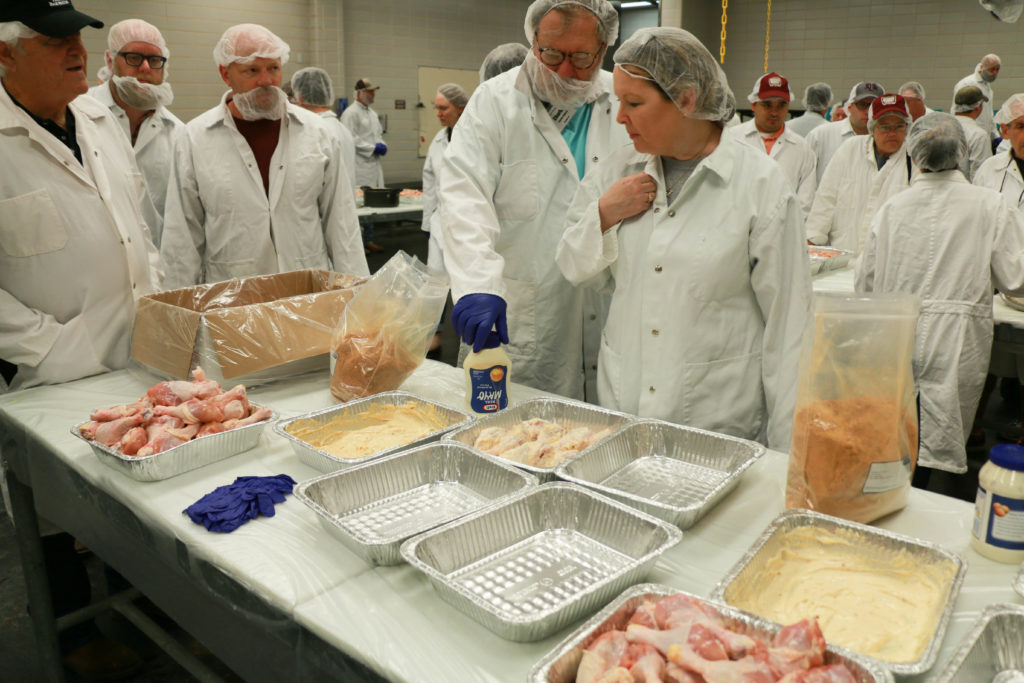
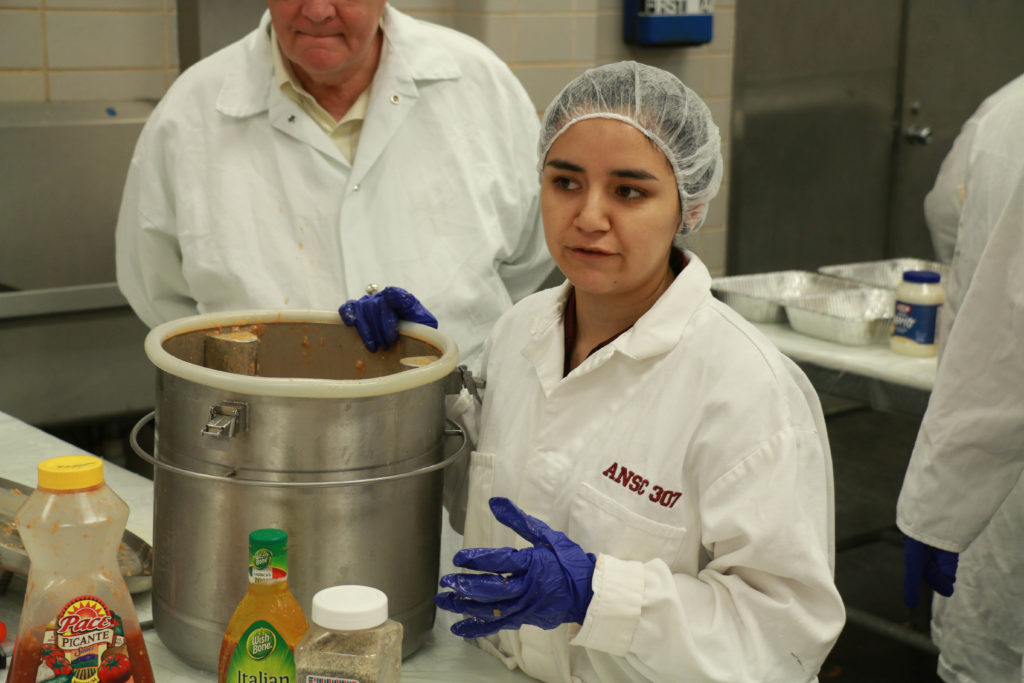
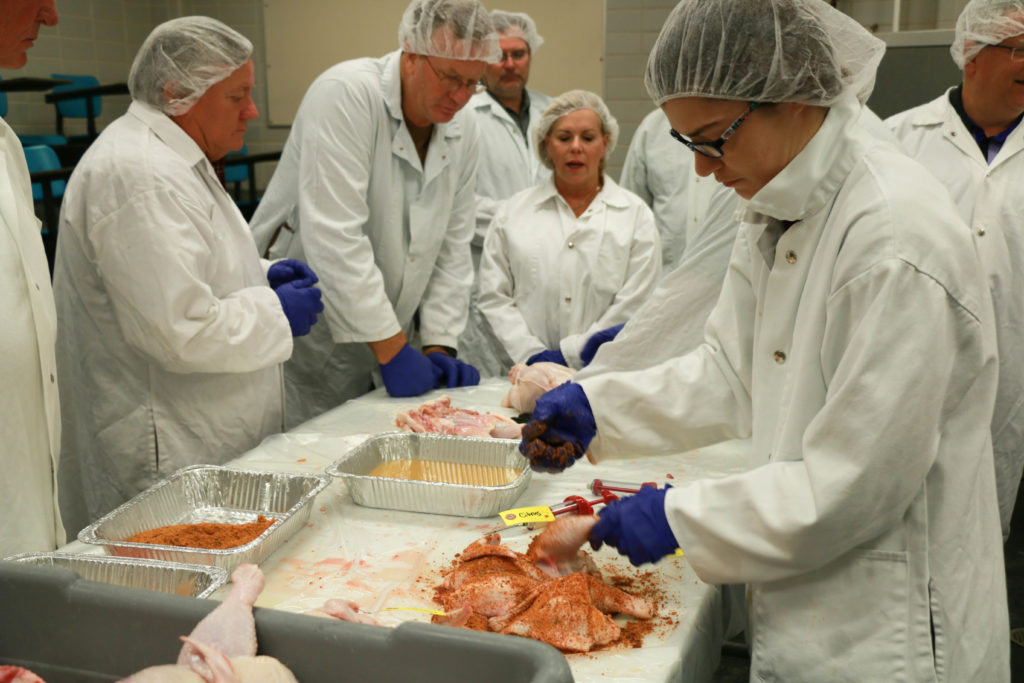
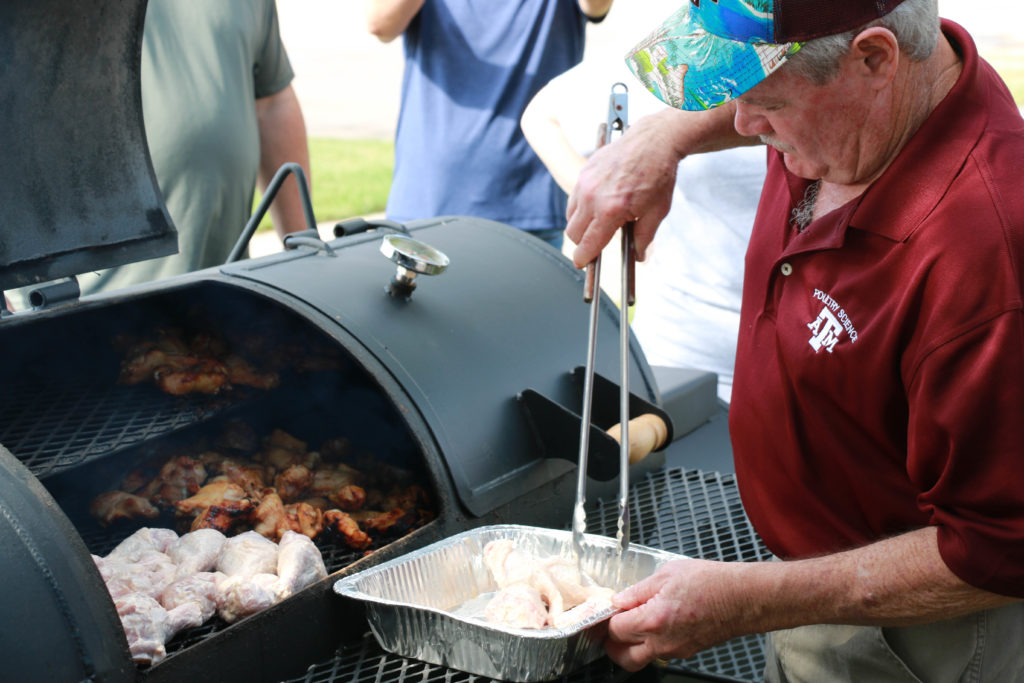
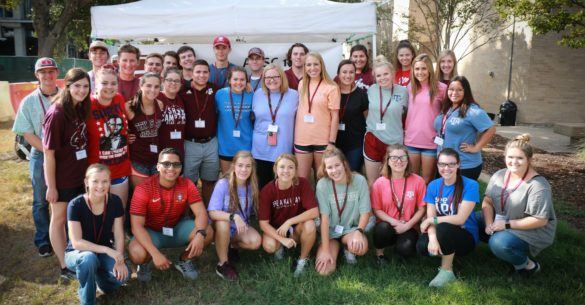

Pingback: 2016 Texas A&M Barbecue Summer Camp | Scrumptious Chef